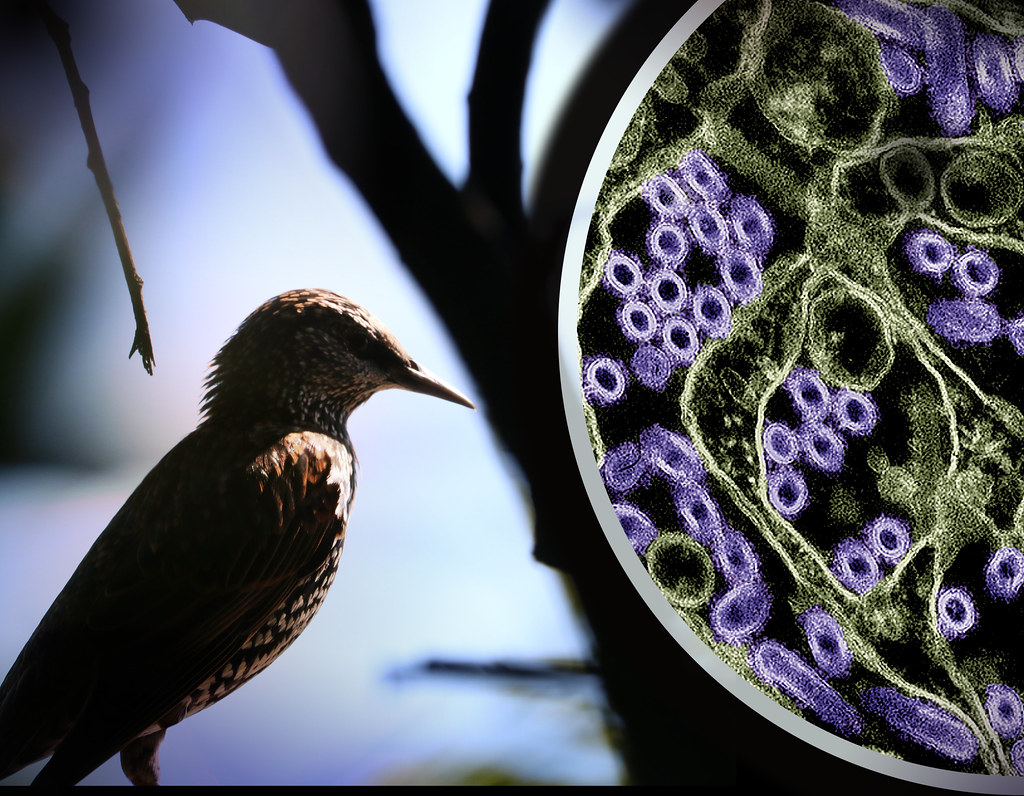
Decoding H5 Influenza: How Deep Mutational Scanning Advances Pandemic Preparedness
Key Takeaways
- H5 influenza viruses are considered potential pandemic threats due to their ability to evolve mutations that impact transmission and vaccine efficacy.
- Researchers used deep mutational scanning to map the effects of over 10,000 mutations in the H5 hemagglutinin (HA) protein on key viral functions.
- The study identified mutations that enhance human receptor binding, increase protein stability, and evade neutralizing antibodies, informing surveillance efforts.
- Findings highlight the importance of monitoring these mutations to update vaccines and improve therapeutic strategies.
Introduction
H5 influenza viruses (such as H5N1, which has been circulating globally and mutating at a rapid rate) have been recognized as potential pandemic threats, particularly strains belonging to clade 2.3.4.4b, which have caused widespread outbreaks in birds and mammals. These viruses can acquire mutations in the hemagglutinin (HA) protein, enabling them to infect humans and evade immune responses.
A recent uncorrected proof submitted and accepted to PLOS Biology used deep mutational scanning to analyze how thousands of possible mutations in the H5 HA protein affect its functions, including receptor binding, stability, and antibody escape. This research provides a comprehensive map of these mutations, enabling better pandemic preparedness and vaccine design.
Understanding the H5 Hemagglutinin Protein
The HA protein plays a critical role in the virus’s ability to infect host cells. Key properties that influence pandemic risk include:
- Receptor Binding: Adaptation to bind human-like receptors (α2-6-linked sialic acids) is essential for efficient human-to-human transmission.
- Protein Stability: Stability in the acidic environment of the respiratory tract enhances airborne transmissibility.
- Immune Evasion: Mutations that alter antigenic sites can reduce the effectiveness of vaccines and neutralizing antibodies.
The study utilized pseudovirus systems to safely test the effects of mutations without the risk of handling fully infectious H5 viruses.
Key Findings of the Study
1. Receptor Binding
The study identified mutations that enhance binding to human-like receptors, including Q226L, which has been observed in prior pandemic strains. These mutations cluster near the receptor-binding pocket, altering the virus’s preference for human respiratory tract receptors over avian ones.
2. Protein Stability
Mutations in the stem region and base of the HA head domain were found to improve stability under acidic conditions. Increased stability correlates with enhanced transmissibility, highlighting these sites as critical for monitoring emerging strains.
3. Immune Evasion
Mutations in antigenic regions of the HA head allowed escape from neutralizing antibodies generated by vaccination or infection. The study validated several escape mutations present in circulating H5 viruses, emphasizing the importance of updating candidate vaccines to address antigenic drift.
Implications for Influenza Surveillance
This research offers tools to improve influenza surveillance by enabling real-time assessment of how mutations impact the risk of human infection and vaccine mismatches. Key applications include:
- Vaccine Updates: Rapid identification of mutations that reduce vaccine efficacy can inform updates to candidate vaccine strains.
- Therapeutic Targeting: Mapping mutation-tolerant sites can guide the design of monoclonal antibodies and antiviral drugs.
- Prioritization of Surveillance: Identifying high-risk mutations allows public health agencies to focus on monitoring specific strains.
Challenges and Future Directions
While the study provides extensive data, limitations remain:
- The pseudovirus system, though safe, may not fully replicate natural viral dynamics.
- Mutations often interact in complex ways, requiring further studies to understand their combined effects.
- Surveillance systems must integrate phenotypic data with genomic sequencing to enhance early detection efforts.
Future research could explore similar approaches for other influenza subtypes and expand testing to human-derived antibodies for greater clinical relevance.
Conclusion
Deep mutational scanning of the H5 hemagglutinin protein represents a significant advance in understanding how influenza viruses evolve and adapt. By providing a detailed map of mutation effects, this study equips public health systems with tools to anticipate and mitigate pandemic risks. Continued integration of these insights into surveillance and vaccine development will be crucial for safeguarding global health.
